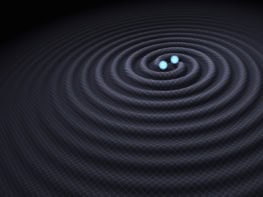
A group of 24 plasma physicists has called for the construction of a stellarator fusion facility in the US. The so-called Flexible Stellarator Physics Facility would test different approaches to stellarator confinement and whether some of the designs could be scaled up to a fusion plant.
Tokamak and stellarator fusion devices both emerged in the early 1950s. They use magnetic confinement to manipulate plasmas but they differ in the containment vessels’ geometries to confine the plasma. Tokamaks use toroidal and poloidal magnetic fields that are generated by magnets and the electric current that flows through the plasma, while stellarators apply a helical magnetic field, produced by external coils.
Those different geometries give each approach a specific advantage. Tokamaks maintain the plasma temperature more effectively while stellarators do a better job of ensuring the plasma’s stability.
The ITER fusion reactor, currently being built in Cadarache, France, is the largest and most ambitious of the roughly 60 tokamak experiments worldwide. Yet there are only a handful of stellarators operational, the most notable being Germany’s Wendelstein 7-X device, which switched on in 2015 and has since achieved significant experimental advances.
The authors of the white paper write that delivering the “ambitious” US decadal strategy for commercial fusion energy, which was released in 2022, will require “a persuasive” stellarator programme in addition to supporting tokamak advances.
Tokamaks and stellarators “are very close relatives, with many aspects in common,” says Felix Parra Diaz, who is the lead author of the white paper, “physics discoveries that benefit one are usually of interest to the other.”
Yet Parra Diaz, who is head of theory at the Princeton Plasma Physics Laboratory and carries out research on both tokamaks and stellarators, told Physics World that recent advances, especially at Wendelstein 7-X, are propelling the stellarator device as the best route to a fusion power plant.
“Stellarators were widely considered to be difficult to build due to their complex magnets,” says Parra Diaz. “We now think that it is possible to design stellarators with similar or even better confinement than tokamaks. We also believe that it is possible to construct these devices at a reasonable cost due to new magnet designs.”
Multi-stage process
The white paper calls on the US to build a “flexible facility” that would test the validity of theoretical models that suggest where stellarator confinement can be improved and also where it fails.
The design will focus on “scientific gaps” on the path to stellarator fusion. One particular target is the demonstration of “quasi-symmetry” magnetic configurations, which the paper describes as “the most promising strategy to minimize both neoclassical losses and energetic particle transport.”
The authors of the white paper propose a two-stage approach to the new facility. The first stage would involve exploring a range of flexible magnetic configurations while the second would involve upgrading the heating and power systems to further investigate some of the promising configurations from the first stage. ITER fusion reactor hit by massive decade-long delay and €5bn price hike
“It will also serve as a testbed for methods to control how the hot fusion plasma interacts with the walls of stellarator pilot plants,” adds Parra Diaz, who says that designing and building such a device could take between 6 to 9 years depending on “the level of funding”.
The move by the group comes as significant delays push back the international ITER fusion reactor’s switch-on to 2034, almost a decade later than the previous “baseline”.
At the same time alternative tokamak technologies continue to emerge from commercial fusion firms. Tokamak Energy of Abingdon, Oxfordshire, for example, is developing a spherical tokamak design that, the company claims, “is more efficient than the traditional ring donut shape.”



